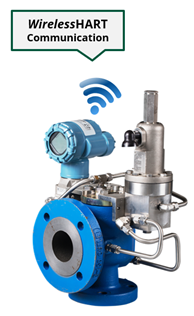Chemical Processing magazine has an excellent article, Understanding Pressure Vessels: Design, Safety and Uses. It highlights types of pressure vessels and their design considerations for safe and reliable operations.
I caught up with Emerson’s Michael Machuca, who highlighted the importance of pressure relief technology in pressure vessels. The U.S. Environmental Protection Agency’s regulation 40 CFR Part 63, National Emission Standards for Hazardous Air Pollutants for Source Categories.
These regulations include monitoring pressure relief valves by “using technologies & methods used to prevent, mitigate, monitor, and report hazardous emissions.
 Michael shared four ways to comply with the monitoring requirements for pressure relief. These include:
Michael shared four ways to comply with the monitoring requirements for pressure relief. These include:
- Release flow acoustic measurement
- Indicating rupture disk (RD)’s discrete measurement
- Pressure measurement for the rupture disk leak
- Pilot-operated pressure relief valves (PRVs) with differential pressure measurement.
The first approach is suitable for all pressure relief devices. The second is good for only rupture disks. The third approach is suitable for pressure relief valves with rupture disk protection, and the fourth approach is best for preventing releases and calculating the release volume.
 Volumetric release calculations are essential for modulating pilot PRVs that may not go fully open during releases. Measuring the differential pressure, with a Rosemount 3051S differential pressure flow transmitter between the valve inlet and the dome, infers the valve lift. With valve lift, orifice, and pressure, calculations of the volumetric release are performed in real time.
Volumetric release calculations are essential for modulating pilot PRVs that may not go fully open during releases. Measuring the differential pressure, with a Rosemount 3051S differential pressure flow transmitter between the valve inlet and the dome, infers the valve lift. With valve lift, orifice, and pressure, calculations of the volumetric release are performed in real time.
Michael also noted that pilot-operated PRVs allow operating pressures up to 98% of set pressure vs 90% in metal seat direct spring PRVs to reduce emissions.
When installed on a PRV’s inlet, rupture discs must be monitored to meet ASME safety standards. RDs, when directly routed to a flare system or vented directly to the atmosphere, follow the same monitoring procedure and solutions applied for PRVs. A Rosemount wireless pressure gauge can detect and react to the RD failures before the situation becomes critical.
With the Rosemount 702 wireless discrete transmitter, if the RD bursts, then the Rupture Disc Indicator will open a contact. The transmitter will then detect that the RD has blown, and immediately notify operations staff or initiate control logic in the control system to act.
The Rosemount 708 wireless acoustic transmitter is non-intrusive and clamps directly onto the PRV discharge pipe surface. It measures both acoustic and temperature to detect release conditions.
These methods significantly improve over traditional methods such as observing upstream pressure peaks and valleys around the pressure limit, because it’s difficult to determine when the PRV is open or closed, and conditions such as leakages from valve simmering or chattering cannot be easily identified. Troubleshooting can take from hours to days to resolve.
The Plantweb Insight for Pressure Relief Valve application helps you automate and eliminate the guesswork for pressure relief valve monitoring. The application indicates PRV releases, including start and end times, and production and emissions losses. Event log records are also automatically generated for one year for EPA reporting.
Follow the links in the post to learn more about reducing emissions and operating more safely and efficiently using the monitoring solutions.

